What is food sketching and what can you draw?
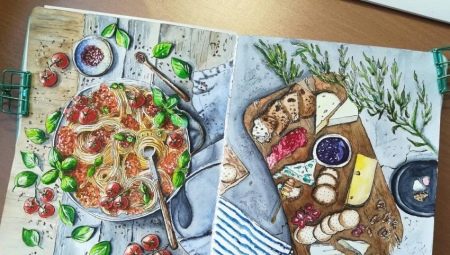
All people love food. And it's not just about her taste. The beauty and artistic value of a dish can be just as important as the ingredients and calories. Capturing this value and passing it on to others is the basic idea behind food sketching.
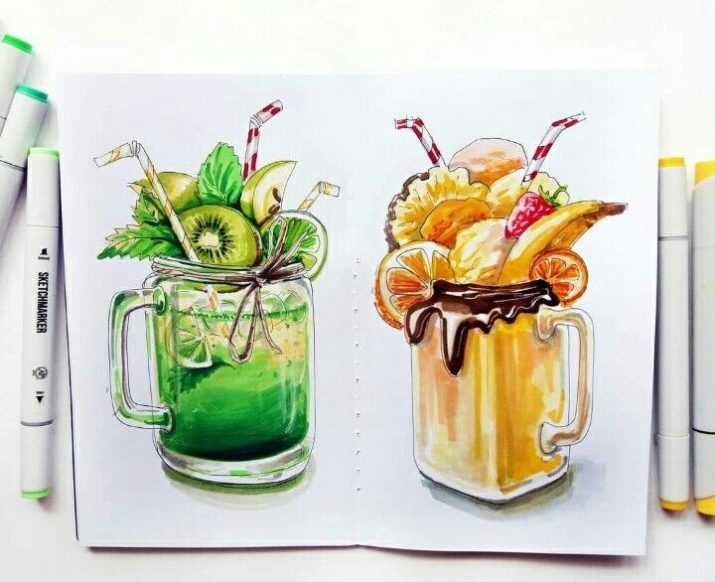
Peculiarities
Food sketches can be thought of as a derivative of still life, but at some point, food sketches became so common that they were given their own name in English.
Sketching food from nature is a good warm-up and a little daily practice for anyone who wants to get creative. You can take a small notebook and spend a week sketching all of your food for your sketchbook.
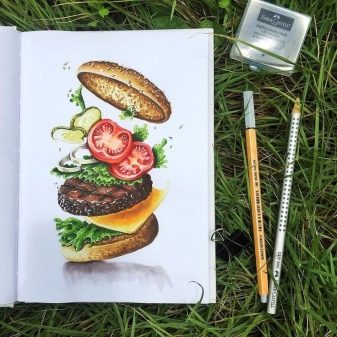
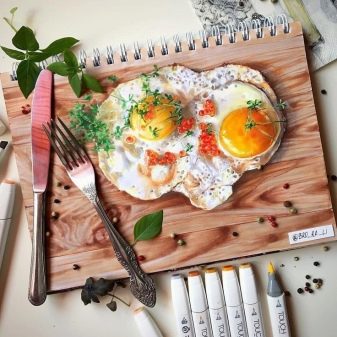
Thanks to the large number of beautiful images, artists always have the source material for illustrations and can draw chic and intricate dishes from the comfort of their home.
Photos usually convey information accurately. You can idealize nature, maximize expressiveness and move away from realism into the realm of stylization.
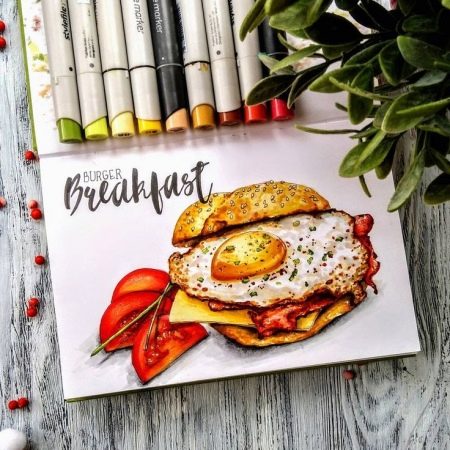
One of the reasons food illustrations have become so popular is due to the fact that they learned to use them in commercial activities... After all, it can sometimes be difficult to find a photo with the right composition, even though there are a huge number of images on the web. Illustrations, on the other hand, allow you to combine different details, adjusting angles and accents as needed to suit your purpose. Food sketches can be used as the basis for a logo, menu design, website, or print.
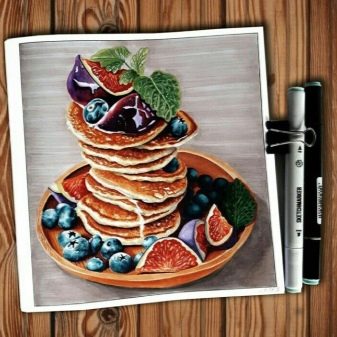
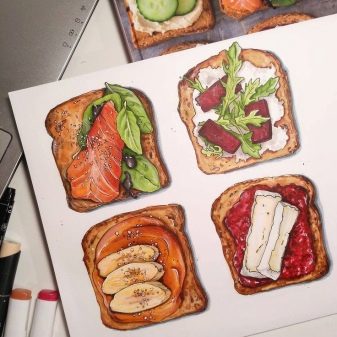
The theme of food drawings is very multifaceted. People prepare food and paint according to their tastes.
Nevertheless, sweets are what every sketcher tried to portray, so this direction can be called the leading one.

Where to begin?
Here are some tips for newbies. Fruits and vegetables are a good start. Simple shapes make it easy to figure out the position of light and shadow, and you can also practice smoothing gradients. Start with a couple of light objects, work on a watercolor style, try to convey volume. Once you are confident in your skills, you can compare the size, texture, and detail of vegetables and fruits to add variety to your presentation.
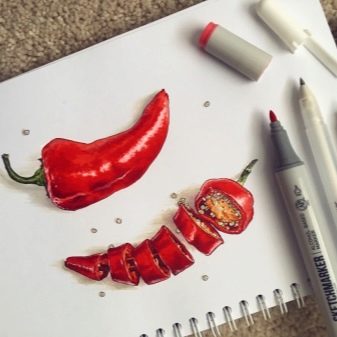
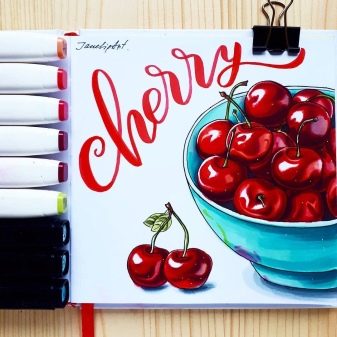
Think over the idea of the illustration. Many dishes look good when cooked, while others look best in the ingredients stage.
Uzbek samsa, Japanese rolls, American burger - many of these dishes are effectively served in traditional dishes. Take a good look and make sure that the recipe you are depicting contains such utensils.

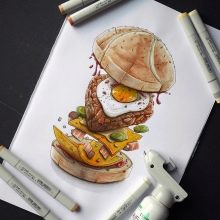
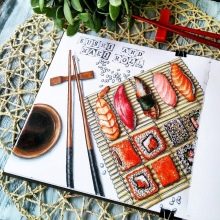
It is also important to consider the background and environment. For example, you can add a checkered tablecloth to the plot to create a cozy feel, or use serving items and utensils to express the character of the country.
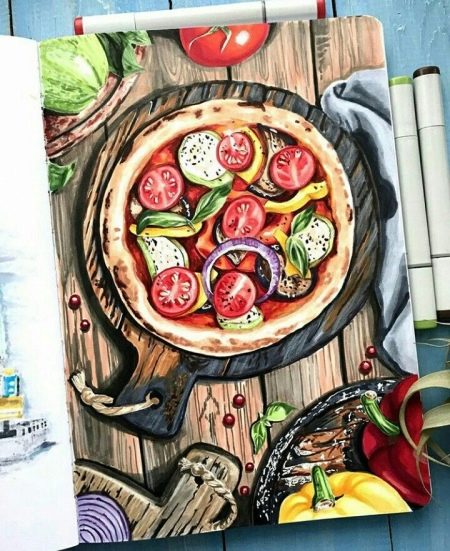
Palette
Once you've chosen a sketch theme, plot, and source material, it's time to narrow down the colors. Most often, the overall effect of a painting is based on the ratio of two or three shades.
Sometimes they are similar, sometimes they contrast. Ratatouille, for example, is a selection of crimson tomatoes, green courgettes, and purple eggplants. Pick all three of these colors at the same time and use their shades to create harmony.
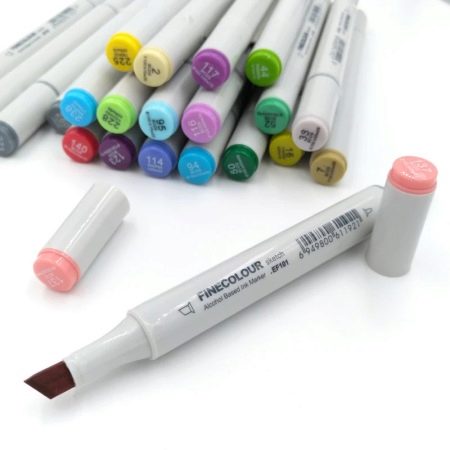
Details
After completing the artwork, the next step is to create a caption or title. This part of sketching is extremely important, as it takes the meaning of the sketch to another level, making it applicable and relevant.
Space for the largest objects, such as a text box for the name of a dish or a description of a recipe, can be prepared in advance.
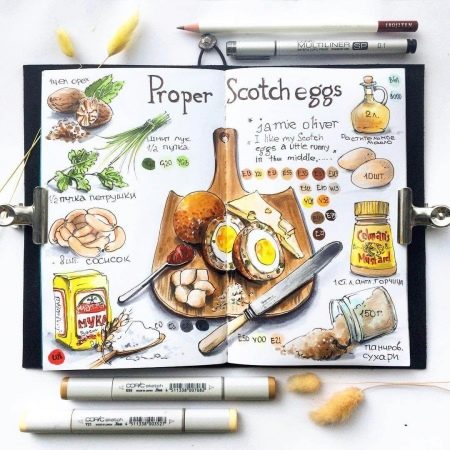
You can also simulate a magazine layout for a more complete and formal recipe.
Overview of drawing options for beginners
Let's look at some good examples of watercolor food sketching.
Salmon
Salmon's red color contrasts beautifully with avocado and spinach. The plate is beautifully decorated. Unlike still life photography, fewer tones are required here, so it is important to capture and convey the difference in color itself.
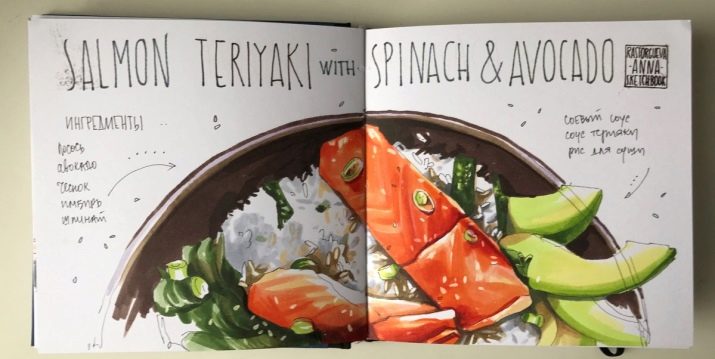
Mojito
Another way of working with shades is the principle of similarity. The food is uniform in color and we only distinguish shades.
Mojito reveals its light green color scheme. Tonal contrast takes an important place with a competent transition from lighter shades to richer and deeper ones.
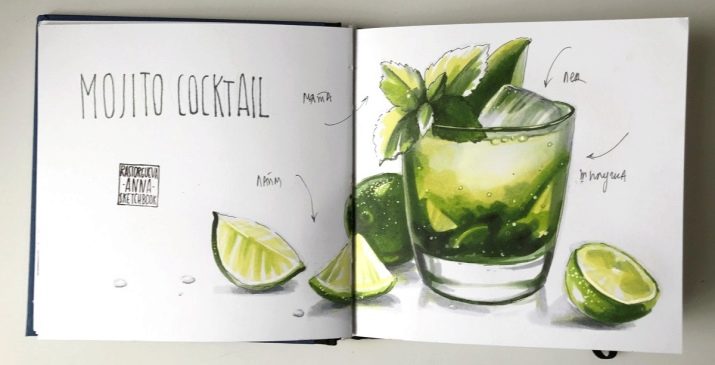
Recipes
Below is a page with recipes for cooking fish. A phased sketch can simplify and classify the process. Cooking food like this can be as fun as drawing it.
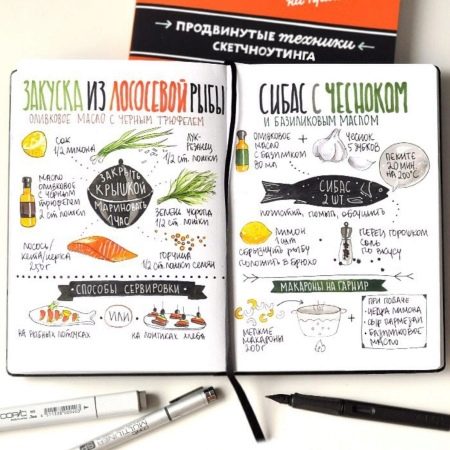
You can change the composition. For example, it’s interesting to paint the soup on top to draw attention to what’s inside and not to the plate itself. On the other hand, a layered dessert is more interesting when viewed from the side.
How to draw a cake?
Below is a step-by-step look at how to sketch a cake with felt-tip pens.
Sketch
First, draw the cake in black and white. Sketch the cake with a hard pencil, trace around it with a thin black liner and erase the pencil marks with an eraser.
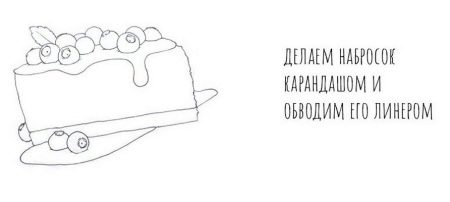
Souffle
Draw the top layer of the cake. This is best done with a wide marker.... For a smoother layer, you can use the marker twice. Both sides of the cake do not need to be contoured. Then work on the future soufflé with a blender. To do this, run the tip of the blender several times over the fill and its borders. The paper will quickly darken with moisture, but the results will be noticeable after the alcohol evaporates.This trick will help make the cake look lighter.
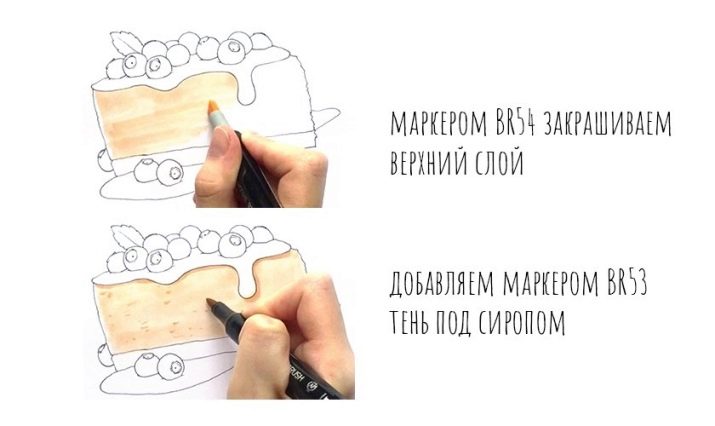
Draw a shadow on top of the syrup. Add texture with small strokes of the same color. Smooth it out with the previous shade.
Dough
The horizontal strokes on the bottom of the cake allow you to create the desired dough texture right away. Then use an even lighter highlighter color on top to unify the whole thing and smooth the transition.
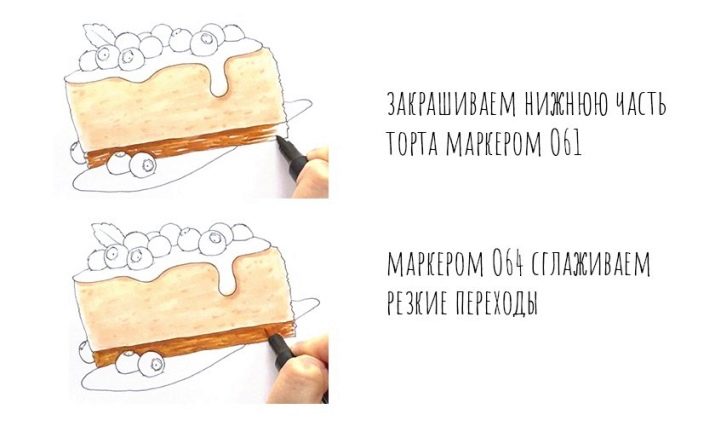
Berries
Fill the blueberries with color, leaving a thin layer of white paper in the lighted area on the left. Use a blender to blur the border. Then take a darker marker to darken the berries. Use blueberries as a guide for realistic results. Next, soften the borders of the dark areas of the berry.
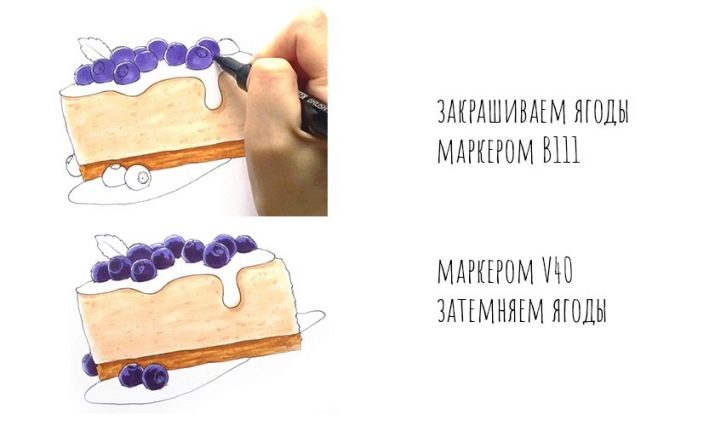
Syrup
The next step is to make a base layer of syrup in two colors. Add a layer of red first, go around the shiny part. The syrup is slightly red underneath, but a dark purple color is superimposed on top of it.
Apply a deep purple color to both blueberries and syrup to visually blend them into the composition. Accentuate the highlights with a blender. Repeat this step a couple more times for the best effect.
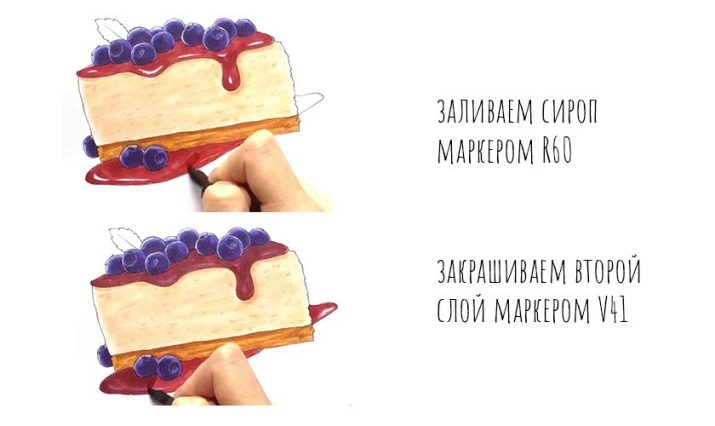
Shadows
Draw a more pronounced shadow on the blueberries and again use the purple highlighter on top to blur the harsh transition. Use a gray marker to highlight the shadows under the syrup and darken the dough.
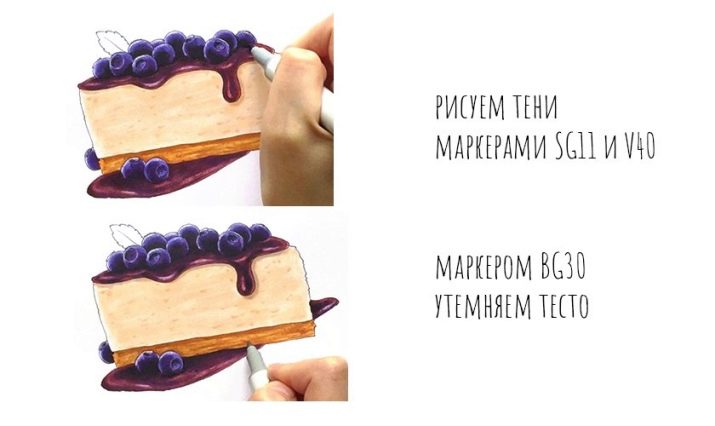
Leaf and details
Add a green leaf and create a basic fill for it. Then darken the top half of the leaf to create veining. The shadow is done in two steps. Use a light gray marker to fill in the outline of the shadow. Then with a darker color, draw a thin line just below the objects. The last step is to soften the borders.
The dough still looks soggy, so you can add a different texture and use the liner to make small dots.
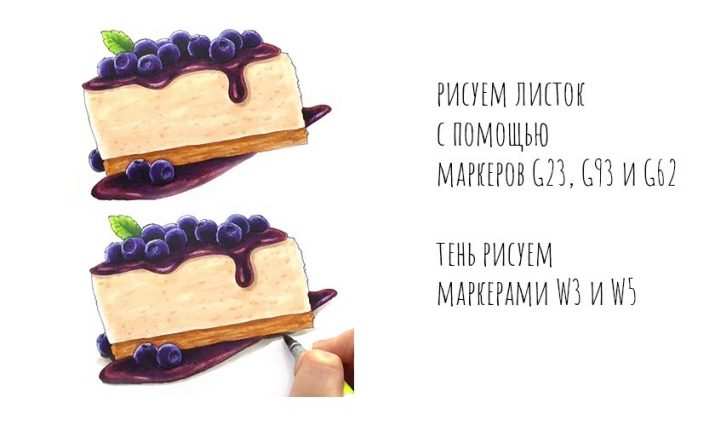
Lighting, highlights and outlines
Darken a few highlights so the artwork doesn't look too bright. Intensify the shadow pattern under the syrup.
Finally, use a thicker liner to draw the outline of the painting. If you touch the middle of the drawing with your hand and the outline floats away, you can correct or reduce it with a second stroke. However, you can also leave it as it is, it depends on your preference.


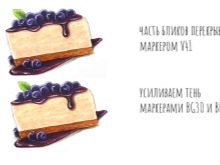
The cake illustration is complete!

Useful Tips
Let's take a look at some tips from experienced food sketchers.
-
Give up perfectionism... Wanting to create something perfect from scratch can be intimidating and demotivating. Don't try to perfect your sketches.
-
The most important thing in food sketching is to hold your pencil so that you can draw light, jagged lines. It is not recommended to hold it too tightly or too close to the base. The ideal position is when the pencil is free in your hand.
-
Creating light and shadow is the main way to make a sketch in 3D.... Always add volume, flat images are less attractive.
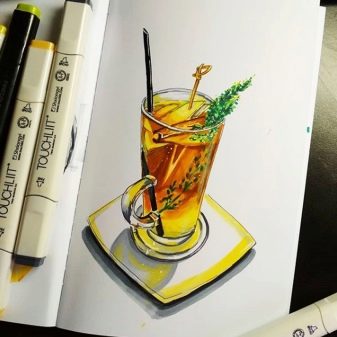

Food is a great subject to hone your skills in expressing texture and color. Look for good angles that reveal the best sides of your dish, experiment with color. Good sketches and bon appetit!









